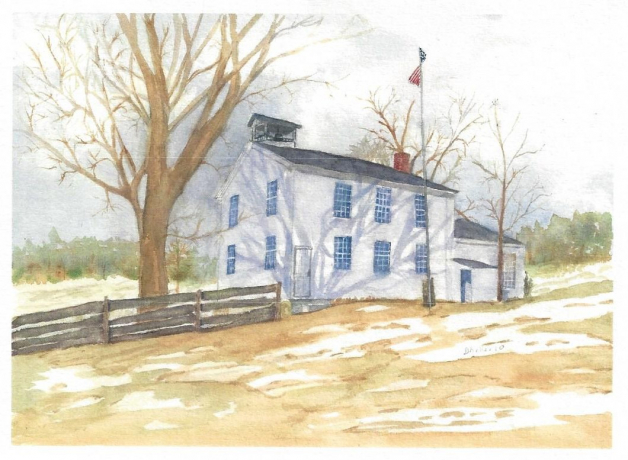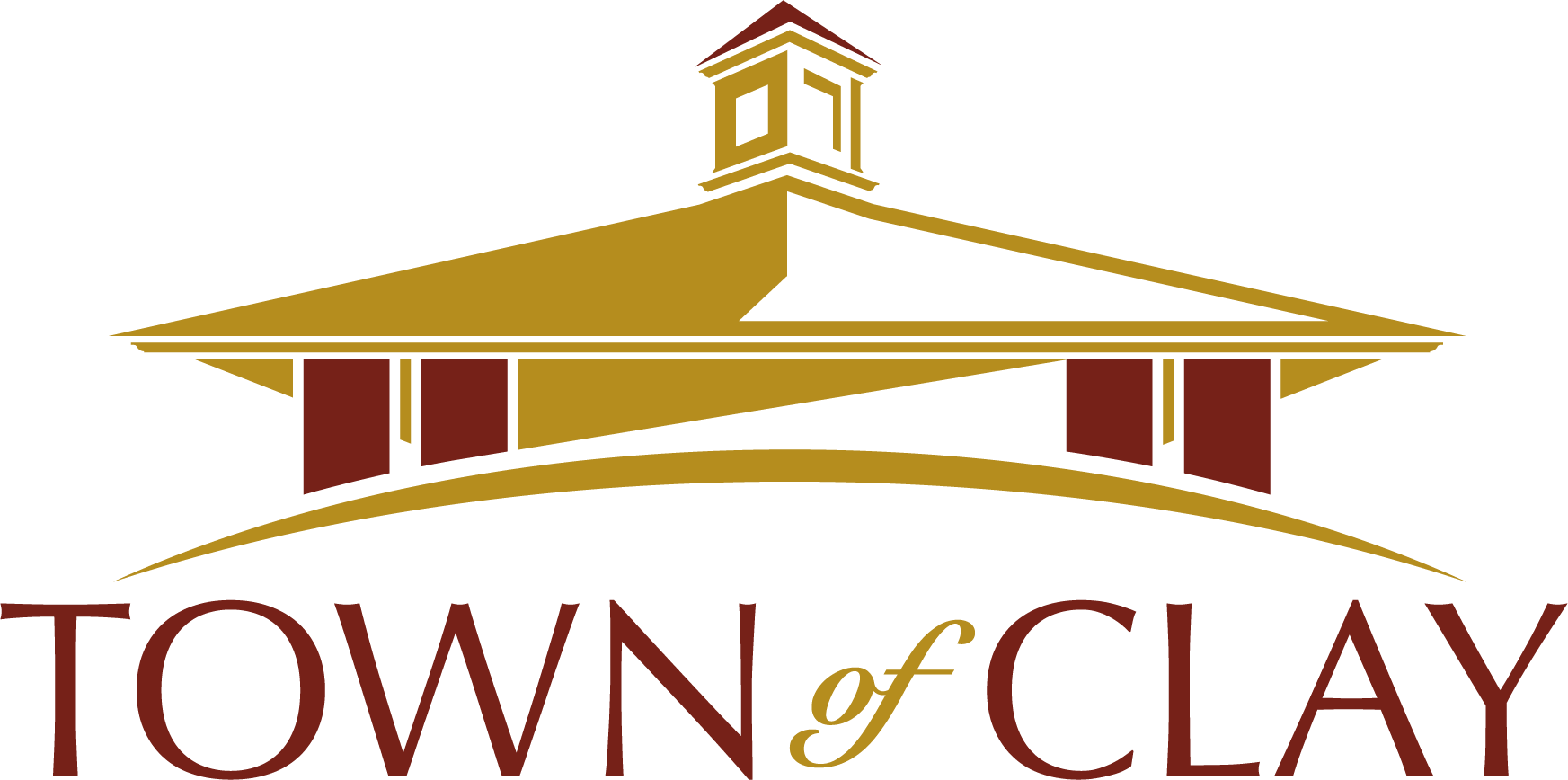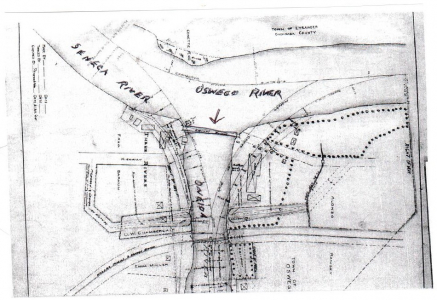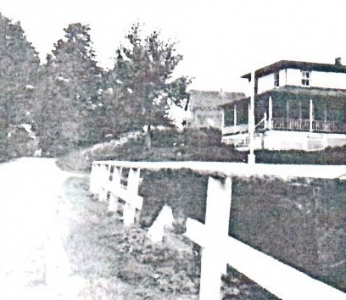Hamlet of BelgiumPosted on March 10, 2021 |
Image

|
HISTORY MYSTERY: Hamlet of Belgium
Although its importance as the center of Clay was short-lived, Belgium had a very unusual history. Seven sources agree on this story. Originally called “Gaskin Rifts, it grew up on both sides of the Seneca River when people began moving west in the early 1800’s. The west side became part of Lysander and the east side became part of the newly incorporated Town of Clay in 1827. The remaining Clay territory was taken from the Town of Cicero. To connect both sides of Belgium across Seneca River, the Sodus Bay and Westmoreland Turnpike Company partially erected a bridge in 1824. To complete it, Col. J. Voorhees obtained a charter and finished it to be used as a toll bridge.
The first Frame building was a toll house erected in 1825 on the east side of the river. The turnpike, Route 31, hadn’t been built yet. However, the first log schoolhouse had been built in 1809 and a wooden building in 1812, which still stands east of the river on Gaskin Road (See picture included here). It is believed that Mose Kinne, who had previously taught school in his home, became the first teacher. Louise Gillespy* remembers that there was a small room downstairs for the first to fourth grades and a larger one for fifth to eighth grades when she attended, as it had been since the beginning. Upstairs was used for community activities.
What spurred the growth of Belgium was the opening of the Erie Canal in 1825 and the Oswsego Canal in 1828, two of the waterways that greatly contributed to the expansion of this whole area. Goods were sent east and brought to the Clay area from all over the world. Added to this was the development of the old “natural waterway” through Oneida Lake. In 1832, the Oneida Lake Canal Company was granted the right to build a canal from Higginsville (First lock from Rome) to Oneida Lake to facilitate the flow of goods from the Hudson Valley and provide a market to the Oneida Lake region. In 1838, the Oneida Lake and River Improvement Company deepened the channel and provided a dam and lock at Caughdenoy and Oak Orchard larger than those on the Erie to accommodate steamers. This greatly added to the development of Clay. Previously, the tugs had pulled barges around Caughdenoy and “Big Bend” (Horseshoe Island).
In 1828, James Little had the only family on the Lysander side. Others began arriving and started businesses. James became a merchant here in 1830 but built his home on the east side of the Seneca River. The Seneca Bride was rebuilt in 1843 as a free bridge with $850 from the State Legislature and $1000 each from the Towns of Lysander and Clay. Although there were only four buildings in 1827, by 1848 there were: 28 with 60 inhabitants, three dry goods stores, four grocery and provision stores, two hotels (one right on the east side of the river), three blacksmiths, a tailor and a shoe shop. And, the famous “Oriental Balm Pill” manufactory. Between 1840 and 1850, they were the busiest place in town.
Of great interest was the Pill Company. The “Hot Drops” were placed on the market by James H. Isadell, who was superintendent of the Onondaga County Home and Hospital on Onondaga Hill in 1856. He started the business in Syracuse and called the pill the “invigorator.” It was said to be beneficial for almost any ailment as: suffocation, neuralgia, palpation of the heart, dizzy spells, chills, sore throat and semi-consciousness. Both he and his son lived to their 80’s, after which Mrs. Eunice Isadell guided the running of the hot drops business from her home overlooking the west bank of the Seneca River in Belgium. The business later was moved to Euclid and operated under the name of the Oriental Sovereign Pills Factory.
Another resident who was famous on the Clay side was Charles Bernhardt, a craftsman with willow wands who lived at 8403 Gaskin Road. He followed the process from cutting the willows, to steaming, stripping and soaking them. When done, the wands were ready to construct a basket which only took him an hour and 10 minutes. His baskets were always in demand.
A few original buildings remain today. The school still stands as a residence on Gaskin Road. However, according to Louise,* in 1956, it was in such need of repair, the residents voted to close it. It was sold along with the books and other materials and the children sent to Baldwinsville schools. After remodeling it, the new owners moved in. You will pass Belgium today on Route 31 and take the modern five-lane bridge across the Seneca River. Belgium has become a peaceful hamlet that has retained its country charm.
*Information from an interview with Louise Gillespy in 2010
Dorothy Heller
3-10-21
Other
History Mysteries
Clay History Camp 2012
History Mystery | Jul 9, 2012
The week of July 9, 2012, seven girls and seven boys from around town made some wonderful memories, Under the direction of Cindy Redhead, chairman of this year’s History Camp, and nine volunteers and helper


